Hai Duong is located in Red River Delta. It is one of provinces in Red River Delta situated in the key economic region of the North Vietnam. The administrative center is Ha Duong city located about 57km away from Hanoi capital to the east, 45km far from Haiphong City to the west. It borders with Bac Ninh in the northwest, Bac Giang in the north, Quang Ninh in the northeast, Haiphong City in the east, Thai Binh in the south and Hung Yen in the west. As planned in 2007, Hai Duong is located in the Capital Region with the role of an industrial hub of the entire region.
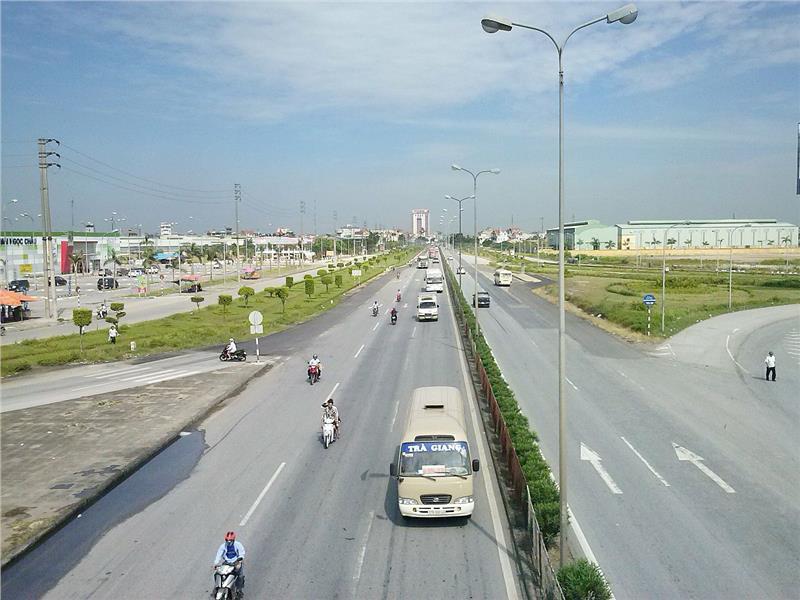
Hai Duong has the total natural area of 1662 square kilometers. Hai Duong terrain is divided into mountainous region and midland. The mountainous region is in the north of province, accounting for 11% the natural area of 13 communes in Chi Linh Town and 18 communes in Kinh Mon District. There are low hills in the region, which is suitable for cultivation of fruit trees, timber trees and short-term industrial trees. The rest is delta region, accounting for 89% of the natural area silted by Thai Binh River, so the soil is fertile suitable for many crops.
Hai Duong weather is portrayed by the sub-tropical climate, consisting of 4 distinct seasons: spring, summer, fall and winter. The annual average rainfall reaches 1300 - 1700mm. The average temperature is 23.3 °C. The average humidity reaches 85 - 87%. Hai Duong weather is favorable for agricultural production, including food crops, fruit trees, especially produce vegetables in winter.
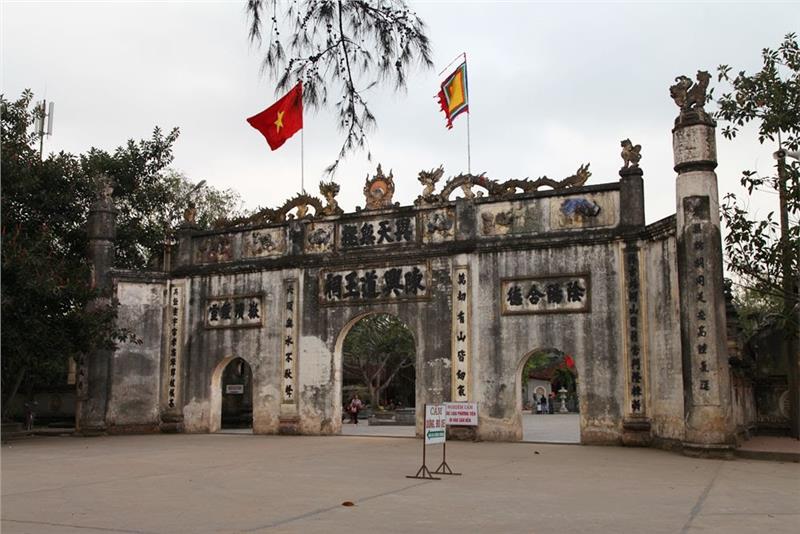
In the name Hai Duong, Hai means the coastal region, adjacent the mainland, while Duong means the sunlight. Hai Duong is situated in the east of Thang Long Citadel. The east is also the direction where the sun rises. So, the name of Hai Duong Province means the light of sun in the South China Sea or the light from the coastal region (in the east). The province was officially called "Hai Duong" since 1469. Hai Duong always plays a prime location in the building and defending country.
It was a part of Duong Tuyen (in the period of King Hung), Giao Chi and Giao Chau (in the 1st millennium); Nam Sach Lo, Hong Lo (under period of Ly and Trần Dynasty); Hong Chau, Nam Sach (in the 16th century); Thua Tuyen, Hai Duong (in the 10th year of Quang Thuan King). Hai Duong province was established in 1831 and was first called "Thanh Dong" (East Province) which means "the city to the east of Thang Long citadel". In 1968, Hai Duong was merged to Hung Yen to become Hai Hung province. In January 1997, Hai Hung province was separated into Hai Duong and Hung Yen.
In 2011, Hai Duong has 1.718.895 people with the population density is 1.039 people/ km², in which 78.1% of the rural area and 21.9% of the urban area. In the province, there are 10 ethnic groups, in which the most populous group is Kinh ethnic group with 1.646.426 people, accounting for 99.74%. The other ethnic minorities are respective 0.09% of San Diu people, 0.0028% of Tay ethnic people, 0.0045% of Nung ethnic people, 0.0039% of Thai ethnic people, 0.001 % of Mong people and the rest ethnic groups. Because the population of the province is manily Kinh ethic people, so the official language of the province is Vietnamese.
Hai Duong province’s administration is divided into a city, one town and 10 districts including Hai Duong City, Chi Linh Town, Nam Sach District, Kinh Mon District, Kim Thanh District, Thanh Ha District, Cam Giang District, Binh Giang District, Gia Loc District, Tu Ky District, Ninh Giang District, and Thanh Mien District. As planned construction of Hai Duong to 2020, vision to 2030, the province will form 3 industrial clusters including Hai Duong - Highway No. 5 corridor, Chi Linh - Kinh Mon, Thanh Mien and the provincial southern region. The plan shows the development along the corridor to create network of provincial territorial planning. The oriented industrial development includes industrial cluster and zones with the total area of 5400ha. Technical infrastructure system as roads, railways, waterways and wharves of the province will be upgraded as planned. The plan also reflects the views on selecting the priority investment projects by the year 2015 - 2020, including social works and technical infrastructure.
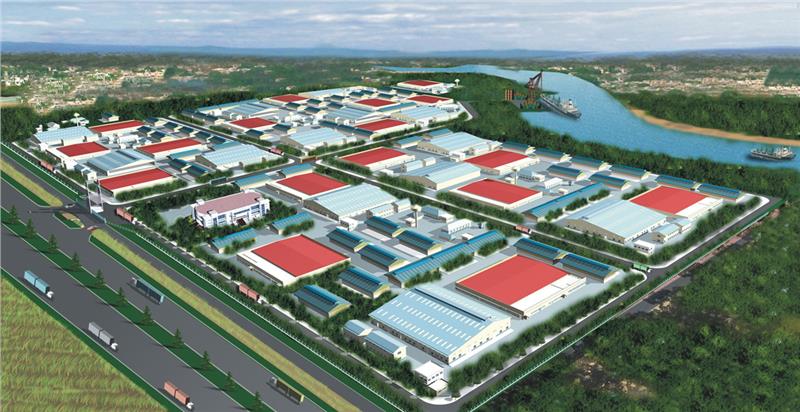
The gross regional domestic product (GRDP at current price 2010) increased by 7.7% compared to 2013 (up 7 – 7.5% over the year plan), higher than national average, in which the additional value (including taxes) of agriculture, forestry and fishery increases by 2.3%, industry - construction increased by 9.9% (including 10.2% of taxes), service sector rose 6.5% (including 7% of taxes). Hai Duong economy continues to shift in the right direction, reducing the proportion of agriculture, forestry and fishery, increasing the proportion of industry - construction and service, the economic structure is estimated at 16,5% - 51,2% - 32,3% (in 2013 reached 17,1% - 50,9% - 32%).
Until now, Hai Duong has planned 11 industrial zones with an area of 2719ha. With clear policies and incentives to investors at home and abroad, and favorable location, Hai Duong has attracted many investors into industrial zones. In the province, there are 236 FDI projects of investors from 24 countries and territories, with the total registered capital of 5650 billion USD.
Hai Duong situates in the north key economic region, about 60km from Hanoi, 45km from Haiphong City and 80km from Halong Bay. The province has the convenient traffic system in which 44-kilometer-long highway No. 5 runs through the province, 20-kilometer-long highway no.18 runs through the north of province and highway no.183 runs along the province linking highway No.5 and No.18, the railway Hanoi-Haiphong runs parallel to Highway No.5 with 7 stations in the province.
The railway Kep - Pha Lai provides the coal for Pha Lai power plant. Waterway transport system has 16 routes with the length of 400km, so it is convenient for passing of vessels with tonnage of 400-500 tonnes. Favorable geographic location and transportation systems have facilitated for economic exchanges between Hai Duong with other domestic and international provinces and cities.
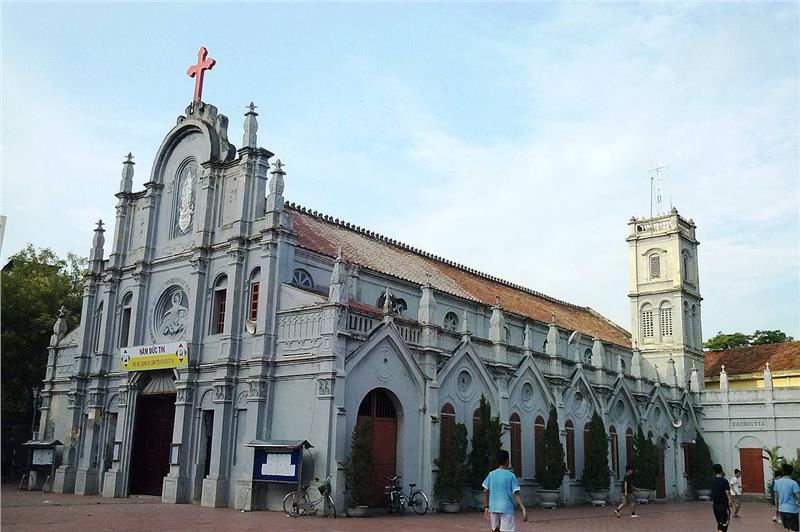
Hai Duong is famous for the traditional fondness for learning. This land is the home to many scholars, first doctoral candidates of Vietnam. During the feudal period, Hai Duong had 12 first doctoral candidates, ranked the second in the country after Bac Ninh. The current education of Hai Duong is considered a cradle training talents of Vietnam. The education of the province develops comprehensively and solidly both in scale and quality. Comprehensive education quality is enhanced. Professional secondary schools are upgraded and expanded in training majors.
Health care is paid special attention. The figure of malnourished children under 5 years old is decreased, continuing to implement well the national objectives in health. In addition, the Cancer and Cardiovascular Intervention Center was founded in provincial general hospital. Measures of supervising and detecting disease are implemented comprehensively and timely to prevent and control the disease.
In 2014, the province settled and created new jobs for 33.552 workers, reaching 105% of the year plan. Deploying more sustainable poverty reduction measures, the poverty rate fell from 5.82% in 2013 to 4.62%, the percentage of poor households accounted for 4.3%.

Hai Duong culture is formed from the patriotism and revolutionary tradition of Hai Duong people. Throughout the history of country, Hai Duong people has contributed to the glorious history of the country, with famous historical characters such as Woman General Thien Nhan, Thien Khanh, Khuc Thua Du, Yet Kieu, Tran Khac Chung, Tran Khanh Du, Nguyen Che Nghie, Ngo Be, Dinh Van ta, Nguyen Huu Cau, Doc Tit, Do Quang, Le Thanh Nghi, Nguyen Luong Bang. In two resistance war against French colonists and American emperor, more than 30 thousand Hai Duong youths fought for national defense. 38.295 outstanding people of Hai Duong sacrificed; the province enrolled 1,658 Vietnam heroic mothers.
Hai Duong is also an academic land. Mao Dien Literature Temple (Cam Giang) is a testament to the traditional fondness for learning of Hai Duong people. Many Confucians of Hai Duong are famous authors who leave today hundreds of valuable work in the field of politics, military, science, literary and diplomacy such as Tue Tinh, Mac Dinh Chi, Pham Su Manh, Nghuyen Phi Khanh, Nguyen Trai, Vu Huu, Nguyen Du..., especially Nguyen Thi Due - the first woman doctoral candidate of Vietnam.
In addition, Hai Duong is one of the cradles of water puppetry art. The province currently has 2 water puppetry troupes, namely Thanh Hai - Thanh Ha and Hong Phong. Associated with the lives of the farmers, the water puppetry has become the pride of Hai Duong people in particular and Vietnamese people in general.
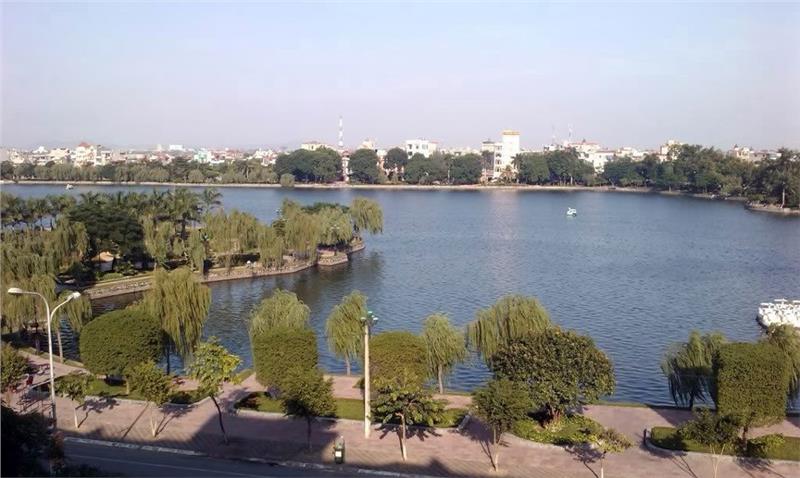
Con Son - Kiep Bac is one of 23 special national monuments of Vietnam. The relic is located in Chi Linh town, Hai Duong. It includes the population of historical relics concerning the glorious victories in three successful resistance wars against the Yuan-Mongolian invaders in the 13th century of Tran troops and the 10-year war against the Ming of Lam Son insurgent army in the 15th century. This is the place associated with the life and career of the national heroes Nguyen Trai, Tran Hung Dao and many cultural figures of the nation: Mac Hien Tich - Mac Kien Quang, Mac Dinh Chi, Tran Nguyen Dan, Huyen Quang...
In Hai Duong, there are many relics used for worshiping Saint Nguyen Minh Khong as Trong pagoda (Long Hung - Ninh Giang); Cao Duong communal house (Cao Duong - Gia Khanh) and Hau Bong communal house (Hau Bong - Quang Minh, Gia Loc); Kinh Chu temple (An Sinh - Kinh Mon district). Saint Nguyen Minh Khong was born on October 15, 1065. He was a famous bonze and shaman in the Ly dynasty. After his death, he was called “Ly Quoc Su” the highest-ranking monk of the dynasty. Thanks to their deeds, he and Tran Hung Dao have been honored by Vietnamese people as Saint Nguyen and Saint Tran.
Stork Island in Chi Lang Nam commune, Thanh Mien district is a small island located about 25km far from Hai Duong city. This is the home to thousands of storks including a plenty of species: white stork, fiery stork, cattle egret, grey stork, and so on. At sunset and sunrise, tourists will have the opportunity to witness an interesting "chorus" of families of storks and herons in their usual livelihood. Besides, Hai Duong is known for a golf course of Chi Linh Star golf club (Sao Do town, Chi Linh district). This is the leading golf course not only in Vietnam but also in the South East Asia.
Referring to Hai Duong specialties, tourists will immediately think about "banh dau xanh" (green bean cake), "banh gai" (gai cake) in Ninh Giang district, lychee Thuy Lam (Thanh Son, Thanh Ha communes), Phu Tai orange, garlic Kinh Mon, Phu Loc wine...
Festivals
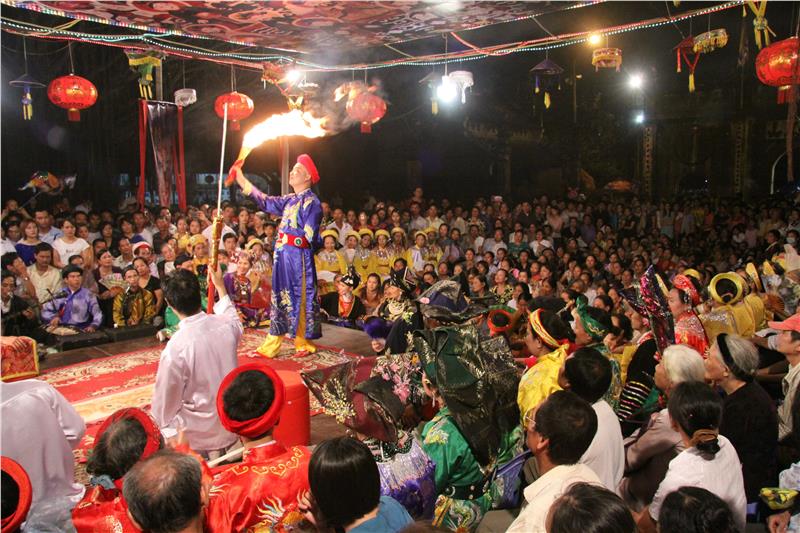
Hai Duong culture is showed through traditional festivals, customs, habits and lifestyles of Hai Duong community past and present. From 1st day of the New Year, Dong Ngo pagoda festival (Dong Ha) is hold. This festival preludes to the spring festivals in Hai Duong. Every year, from the 15th to 20th days of the eighth lunar month, tens of thousands of people throughout the country flock to attend the Kiep Bac Temple Festival. This is one of the largest festivals in the country. It is dedicated to Tran Quoc Tuan, the eminent marshal of the Tran Dynasty, who led the Vietnamese people in the three successful resistance wars against the Yuan-Mongolian invaders in the 13th century. With 566 restored festivals, Hai Duong festival imbues with historical features, customs, beliefs, religion, praying prosperous country, better weather, prosperous life, praising the ancestors, national heroes, showing good tradition of nation.
